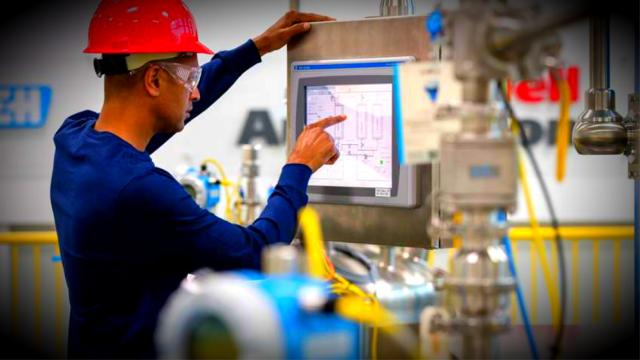
(Source: Rockwell Automation Inc.)
When it comes to maintaining production systems that have been in use for many years or decades, an old saying rings true: What you don’t know can hurt you.
Perhaps an operator didn’t know that one of its assets lacked a critical spare part until production went down, and it was needed. Worse yet, maybe that asset was offshore, forcing the expenditure of a small fortune to get the part there. Or an operator didn’t know that a part needed was no longer made, causing taking of drastic actions like ordering it from eBay—despite not knowing what the condition, history, or firmware of the part will be. It could even be counterfeit!
The fact is, when an operator loses track of the systems and parts that deployed on its assets, risks like obsolescence, parts shortages, and training gaps can creep into operations. Not only are these risks stress-inducing—they can threaten productivity, safety and bottom line.
Even some of the world’s largest oil and gas producers can struggle to keep a firm grasp on their installed base. It’s easy to see why. The many production systems they have in place across several assets have often been supplied by multiple vendors and procured and maintained by different workers, over a long period.
Fortunately, there are ways to create clarity from all this confusion to stay on top of lifecycle risks. With a data-driven approach to managing the installed base, one can always know what systems and parts are deployed across their assets—and track the risks that come with them over time.
Collecting the data
Two sets of data are needed from the production assets to understand the installed base. The first is a complete list of critical production technologies, like control systems, Ethernet switches and HMI devices. The second is a list of all the spare parts on hand for those technologies.
Several factors need to be considered before beginning data collection. Perhaps most important is how the data are collected.
The job can be given to production personnel. But with this route, one must make sure they understand what data to collect, how to collect it and how to store it. One also must make sure they can collect the data in a timely manner. Sometimes, data-collection tasks compete with daily production responsibilities, resulting in drawn-out collection processes.
To simplify things and reduce risk, many oil and gas companies use a service provider. A service provider with experience in the data-collection process can not only collect the data efficiently but also make sure the right data is collected and stored in a standard format.
Ideally, a service provider is flexible when it comes to how they will collect the data.
For example, they should be able to send a field engineer onsite to collect data from easily accessible onshore assets. But for offshore assets, the service provider should be able to equip your onsite personnel with the tools and processes they need to collect the data. Or, if the asset’s production systems are networked, the service provider could simply use a software program to automatically collect the data and send it back to the service provider.
The service provider should also be able to put the data that’s collected into a hierarchy model, with terms and descriptions that are easily understood.
Analyzing the data
Once data collection is completed, then it can be analyzed to uncover risks in the installed base.
For instance, review the installed production system data against the spare parts inventory data to see where there are any spares shortfalls. One might find, as some companies do, that more than half the spare parts needed aren’t available on the assets. One also can identify where they might be keeping spares that aren’t needed anymore, which is a common problem caused by maintenance teams that stockpile spare parts over the years.
The installed-base data can also help identify obsolescence risks, which can be especially useful with production systems that have been in place for 10 to 20 years or longer. The data can tell the lifecycle status of the systems, such as if they’re active, at the end of their life or discontinued. In some cases, companies discover that they don’t have merely a handful of discontinued systems, but rather hundreds of them.
Finally, one can analyze the installed-base data against other aspects of their business to uncover additional risks. The data can be used to evaluate training programs, for example, to make sure workers like electricians are receiving the proper training for the production systems on the assets. And the data can be used to identify known cybersecurity risks for production systems.
Managing your risks
With the data analysis complete, identified risks are prioritized, using the collected data to make smarter decisions in how to address those risks.
A top priority to address could be unavailable spare parts. Using the data, one could identify not only where are the missing spares but also where there is an excess supply to reduce how many new parts are needed to buy.
Aging equipment could be another top priority. As part of the data analysis, one may have identified several systems that are discontinued or nearing the end of their life. Now, a long-term plan for modernizing the platform of these systems or migrating them to a new, more intelligent platform can be created. The installed-base data can help inform this plan.
The data can help create a strategy for updating the production systems over time, instead of doing a more expensive complete system upgrade. The data can also help create a strategy for standardizing production systems, which may involve a short-term ‘bridge’ to allow the update of some older equipment while a more in-depth, comprehensive strategy is developed. In some cases, oil and gas operators have used standardization to reduce their catalog numbers from several to just a couple, which can reduce training and inventory costs.
Lower on your list might be issues like outdated spare parts that are identified as no longer needed.
Finally, keep in mind that the installed-base data will quickly lose its value if it is not kept up to date. New cloud-based tools exist specifically to help maintain the installed-base data over time. The tools can help update the data as the production systems change, and can notify proper personnel when products become discontinued.
This way, neither the data nor the efforts to mitigate lifecycle risks will become static.
What is known can help
Without knowing what systems and parts are dispersed across the assets, problems like parts shortages will only continue to slow down production, make workers’ jobs more difficult and hurt profitability. A data-driven approach to managing the installed base can change all this. It can give a clear picture of the installed base and its risks and help prioritize those risks that pose the greatest danger to the bottom line.
Recommended Reading
Cheniere Energy Declares Quarterly Cash Dividend, Distribution
2024-01-26 - Cheniere’s quarterly cash dividend is payable on Feb. 23 to shareholders of record by Feb. 6.
Marathon Petroleum Sets 2024 Capex at $1.25 Billion
2024-01-30 - Marathon Petroleum Corp. eyes standalone capex at $1.25 billion in 2024, down 10% compared to $1.4 billion in 2023 as it focuses on cost reduction and margin enhancement projects.
Humble Midstream II, Quantum Capital Form Partnership for Infrastructure Projects
2024-01-30 - Humble Midstream II Partners and Quantum Capital Group’s partnership will promote a focus on energy transition infrastructure.
BP’s Kate Thomson Promoted to CFO, Joins Board
2024-02-05 - Before becoming BP’s interim CFO in September 2023, Kate Thomson served as senior vice president of finance for production and operations.
Magnolia Oil & Gas Hikes Quarterly Cash Dividend by 13%
2024-02-05 - Magnolia’s dividend will rise 13% to $0.13 per share, the company said.





